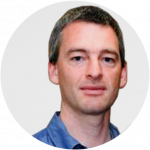https://www.facebook.com/quantumsorter/videos/1282830615183640/
The Q-SORT third Interdisciplinary Training Webinar touches upon the following topics:
– spatial light modulators
– coherent phased arrays
– vortex waves / vortex beams
– electrostatic and magnetostatic electron lenses
– programmable electron phase plates
– quantum coherence
– MEMS
– ptychography.
In light optics, spatial light modulators currently allow full control over the wavefront of optical waves, which has led to many new applications, ranging from astrophysics to advanced light microscopy. Analogous devices for electron optics are being developed, with the ultimate aim of attaining the flexibility of spatial light modulators. The idea here is to be able to shape the electron beam by means of a programmable device, before it interacts with the sample. Yet this endeavour is affected by significant constraints, due to the difficulty of exerting extended coherent control over the phase of the electron probe. In the webinar a new idea is illustrated, which seeks to overcome some of the above limitations. The talk also illustrates the potential advantages of this new approach, which include a relatively inexpensive way to correct spherical aberration. The latter is a defect inherent in all microscopes, which is due to the fact that real-world lenses do not follow the exact profile that is needed in order to achieve perfect focusing. (It can in fact be proven -thanks to Schertzer’s theorem- that for a system with cylindrical symmetry, such as a microscope, it is impossible to achieve lensing that is free from spherical aberration.)
The webinar is aimed at
– spreading awareness amongst physicists of the new possibilities afforded by spatial light modulators
– exchanging ideas between scientists for furthering joint research
– promoting dialogue between the physics and biology/biochemistry communities, establishing a common language between the two disciplines.
About the speaker

Johan Verbeeck received his PhD degree (2002) from the University of Antwerp. Currently he is a full Professor at the electron microscopy group (EMAT) of the University of Antwerp. Johan Verbeeck is an expert in the field of electron microscopy and electron energy loss spectroscopy focusing both on applications in state of the art materials science as well as on developing new techniques. He is the author of more than 200 ISI contributions and his work has been cited more than 3000 times. In 2011, he received the prestigious Ernst Ruska award for electron microscopy for his contribution to the quantification of EELS spectra and the development of electron vortex beams. He is the author of the EELSMODEL software providing model based quantification to users worldwide. In 2012 he received an ERC starting grant in order to explore the properties of electron vortex waves.
